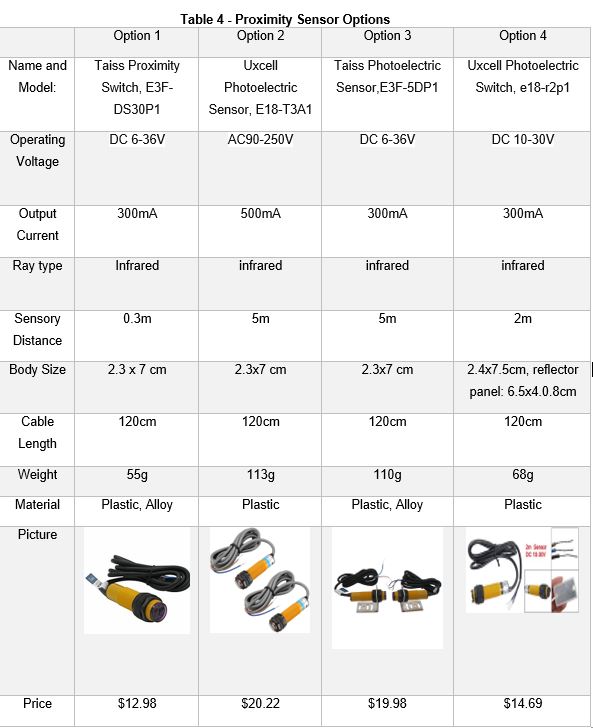The design of the system requires the ability to sense when a bottle is placed, then the system would automatically do a full cycle when it detects a bottle. Additionally, to add some safety measures, for example, when a person places their hand on the rotation belt, the system should do an emergency stop, sensors are required to sense the presence of the hand. In this design, it was decided to use proximity and photoelectric sensors. They both work under the same principle, where an infrared beam is fired, if the beam interferes with an object, then it sends a Boolean pulse to the PLC [10].
In order to choose the appropriate sensors, four options and their technical specifications were looked at as seen in Table 4. Options 1 and 4 are proximity sensors that send infrared beam if it is cut by any object, it’s reflected back to the sensor then it is detected and a pulse is sent to the PLC. The main difference between them is option 4 has a reflector pad to send back the beam, if the beam interrupted, then it will send a pulse to PLC. In options 2 and 3, there is a transmitter and a receiver, where the transmitter emits a beam that is detected by the receiver if the receiver does not detect any beam, it means the beam was cut by an object and a pulse is sent the PLC as a result. The difference between the two options is that one uses AC source and outputs AC, while the other uses the DC source and outputs DC current. The main advantage of having transmitter and receiver is highly increased detected range, and increased reliability as no reflection is needed, but it comes at a higher cost and becomes more complicated to mount in the system. Option 1 was decided to be used to detect a bottle presence as it’s easy to mount and its range (30cm) is enough. Option 3 was decided to be used in adding safety factors to the system as most components are using low DC voltage, so only one type of power source is required for most of the components and the AC option uses 90-250V AC which can be dangerous to work with.
